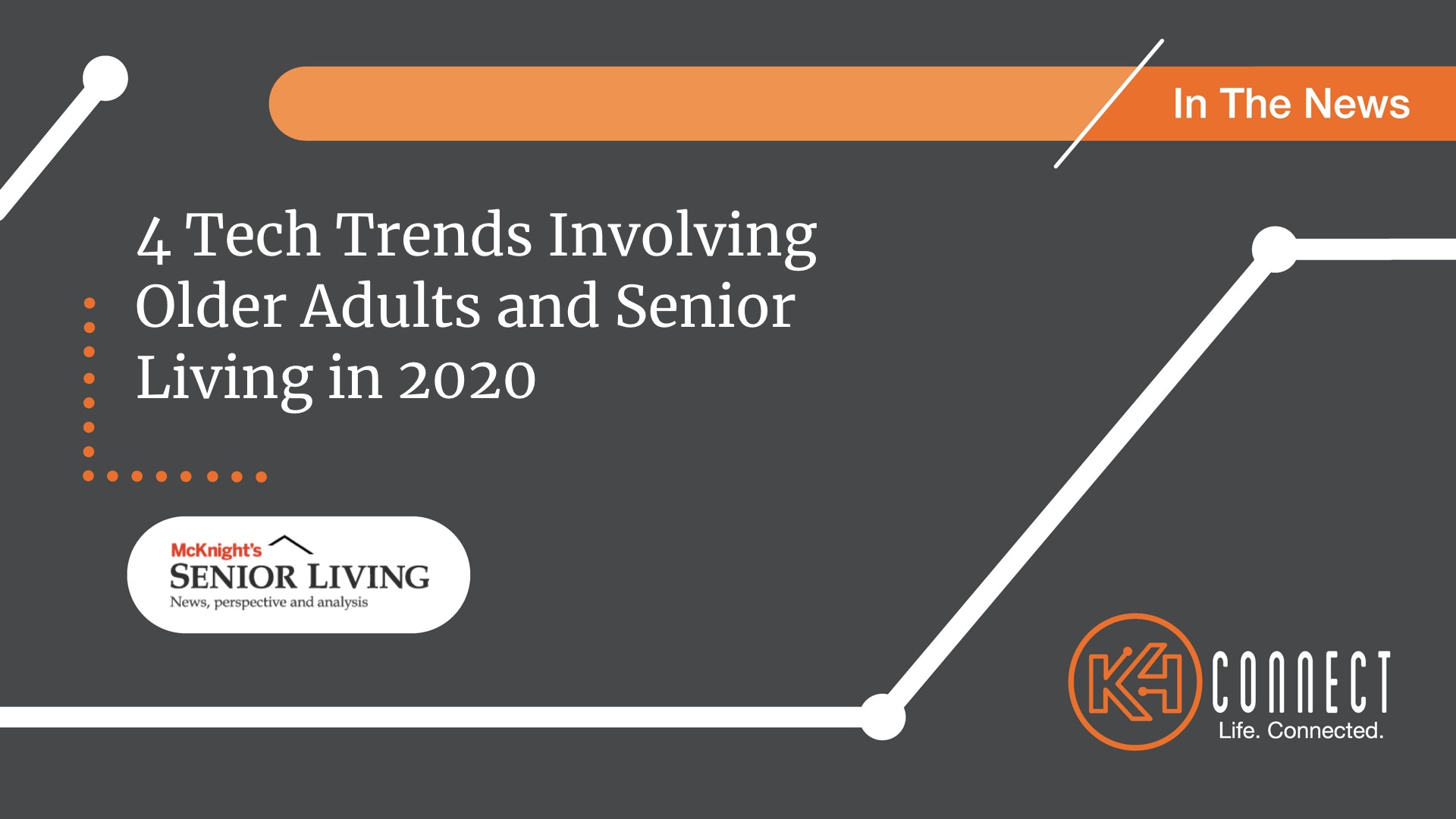With smart home making inroads into senior living, in 2020 we will see the confluence of healthcare data and behavioral data leading to better accuracy in predictions and, hence, providing better services to older adults.
By: Kuldip Pabla
Senior VP of Engineering, K4Connect
December 9, 2019

If you’re working in senior living, you know that the older adult population is experiencing tremendous growth. According to the U.S. Census Bureau, by 2030, all baby boomers will be older than 65 years. This aging will expand the size of the older adult population so that one in every five will be 65 or older.
Given this projection, senior living has reached a pivotal moment with innovation that ultimately will shape the future of the industry. National trends around the next wave of older adults (the Baby Boom generation), ongoing caregiver staffing challenges and an increasingly competitive market for community operators are driving the senior living industry toward technology as a means to mitigate these concerns.
With the continued interest in technology, we’ll see several technology trends arise in 2020:
Proactive voice
As predicted, voice technology has had huge success in adoption by older adults. They like the ease of use and how they’re able to use the technology in a natural way.
In 2020, voice technology will become an integral part of older adults’ lives, with proactive voice.
Current voice solutions require conversation to be initiated by an older adult. With the advancement in voice technologies, and with the maturity of chatbots and custom digital assistants coming into the market, voice will bring a two-way conversation in 2020. Chatbots and digital assistants proactively will be able to initiate conversation based on certain time of the day, but more importantly based on certain events.
For instance, if “smart home” technology (for instance, bed sensors) senses that an older adult got up from bed, then the technology could greet the older adult with a brief rundown of the day, if it is morning. If it is the middle of the night when the resident got up, the technology could offer help.
Machine learning
An abundance of healthcare data are available via government records, healthcare professionals, pharmacies and insurance companies. Certain companies already are making use of these data to predict health problems and prescribe medication or lifestyle changes. What they do not have, however, is access to behavioral data of older adults.
With smart home making inroads into senior living, in 2020 we will see the confluence of healthcare data and behavioral data leading to better accuracy in predictions and, hence, providing better services to older adults.
The emergence of WiFi Doppler imaging
Personal emergency response systems, or PERS, and fall detection devices have been hyped for a long time now, and they have failed to deliver on their promises. At last, I am seeing a ray of hope with WiFi Doppler imaging — a technology that uses the WiFi signal and machine learning to generate imaging data that can be interpreted into insights about the movements of people and objects within a given environment.
Consolidation and more players
As the industry evolves and a new wave of older adults who have demands for technology moves into senior living communities, operators will be looking for ease of use and increasing return on investment by integrating point services into holistic solutions. This trend will lead to even more consolidation of feature vendors offering portal solutions as compared with holistic solutions.
At the same time, more players will emerge on the horizon as they see opportunities with this maturity. It will provide competition for good and more options for community operators, allowing them to provide the best in care.
Kuldip Pabla is the Senior Vice President of Engineering at K4Connect. He has more than 20 years of experience in the technology industry, specifically in Silicon Valley. Before serving in his current position, Pabla was the co-founder and chief technology officer of Cooldimi, an applied artificial intelligence startup focused on building an intelligent systems platform; was the head of innovations and cloud platform engineering at CloudCar, a connected car PaaS startup; and was the senior director of innovations and engineering at Samsung’s Cloud Services Innovation Lab and as part of the managed cloud solutions team at Yahoo!. He also formerly held various innovation and product roles at Sun Microsystems.

